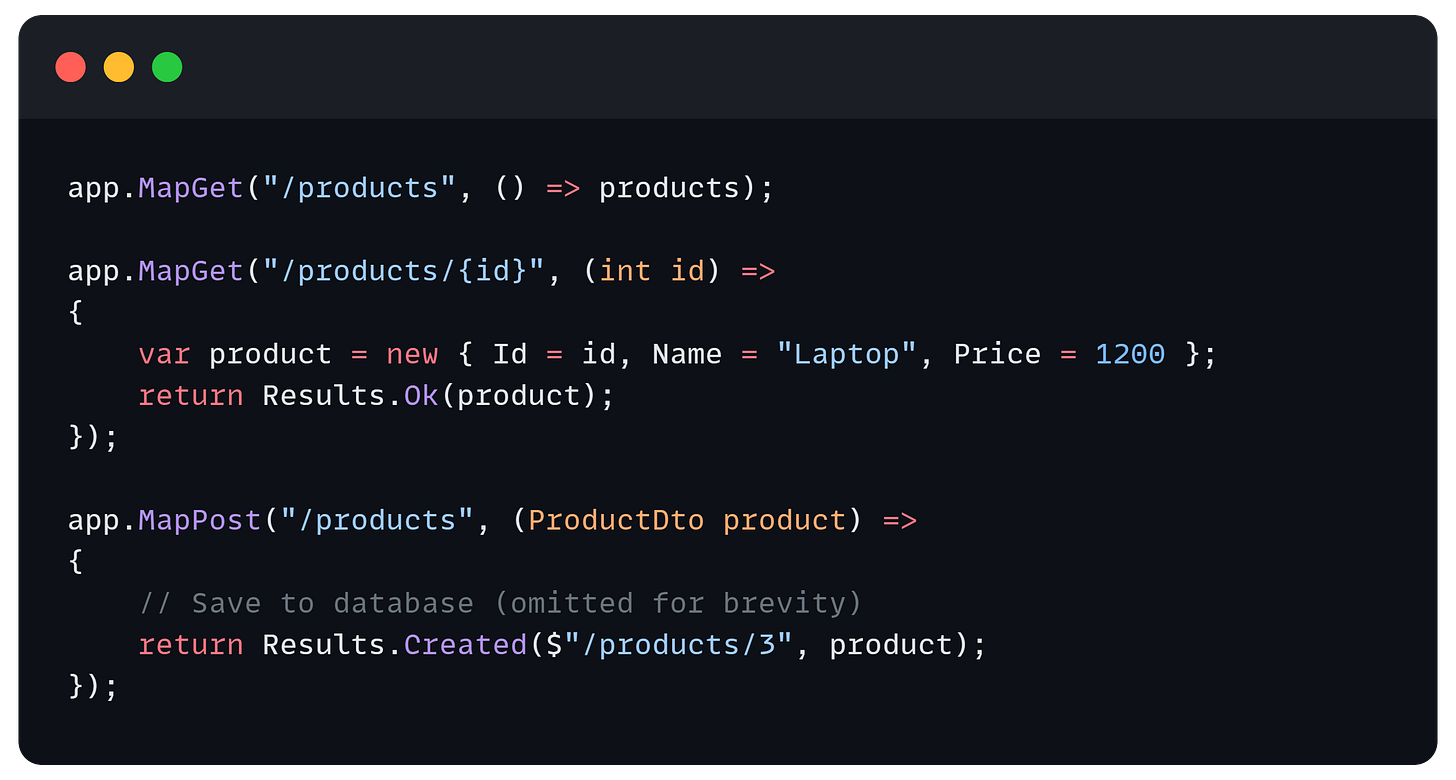Controllers vs Minimal APIs in .NET - Which Should You Choose?
Choosing Between Traditional Controllers and Streamlined Minimal APIs in .NET
When you start building an API in .NET today, you’re faced with a decision:
Should you stick with the traditional Controller-based approach, or embrace the Minimal API style introduced in .NET 6?
Both approaches are officially supported and production-ready.
Both let you create fully functional REST APIs.
But they are quite different in structure, flexibility, and intended use cases.
This guide will walk you through each approach, show you real code examples, compare their pros and cons, and help you decide which is right for your project.
A Quick History
Before .NET 6, creating APIs in ASP.NET Core almost always meant using Controllers within the MVC framework. This approach gave developers a strong, opinionated structure and a rich set of features, but came with some boilerplate.
In .NET 6, Microsoft introduced Minimal APIs — a simpler, more streamlined way to define endpoints. The goal was to make APIs faster to write, easier for small projects, and less intimidating for newcomers.
Today, you can use either.
The question is not about right vs wrong, but about fit for purpose.
What Are Controllers?
Controllers are classes that group API endpoints logically. They follow the Model-View-Controller (MVC) pattern, though for APIs, the “View” is usually JSON or XML data.
They give you a lot out of the box:
Model binding and validation
Attribute-based routing
Filters and middleware hooks
Clear separation of concerns
Example: Controllers in Action
using Microsoft.AspNetCore.Mvc;
[ApiController]
[Route("api/[controller]")]
public class ProductsController : ControllerBase
{
[HttpGet]
public IActionResult GetAllProducts()
{
var products = new[]
{
new { Id = 1, Name = "Laptop", Price = 1200 },
new { Id = 2, Name = "Phone", Price = 800 }
};
return Ok(products);
}
[HttpGet("{id}")]
public IActionResult GetProduct(int id)
{
var product = new { Id = id, Name = "Laptop", Price = 1200 };
return Ok(product);
}
[HttpPost]
public IActionResult AddProduct([FromBody] ProductDto product)
{
// Save to database (omitted for brevity)
return CreatedAtAction(nameof(GetProduct), new { id = 3 }, product);
}
}
public record ProductDto(string Name, decimal Price);Program.cs setup:
var builder = WebApplication.CreateBuilder(args);
builder.Services.AddControllers();
var app = builder.Build();
app.MapControllers();
app.Run();What Are Minimal APIs?
Minimal APIs remove the need for Controllers and attributes. Instead, you define routes directly in your Program.cs or in separate route registration files.
This approach is procedural rather than class-based, and it’s designed to be quick, simple, and minimal in ceremony.
Example: Minimal API Version
var builder = WebApplication.CreateBuilder(args);
var app = builder.Build();
var products = new[]
{
new { Id = 1, Name = "Laptop", Price = 1200 },
new { Id = 2, Name = "Phone", Price = 800 }
};
app.MapGet("/products", () => products);
app.MapGet("/products/{id}", (int id) =>
{
var product = new { Id = id, Name = "Laptop", Price = 1200 };
return Results.Ok(product);
});
app.MapPost("/products", (ProductDto product) =>
{
// Save to database (omitted for brevity)
return Results.Created($"/products/3", product);
});
app.Run();
public record ProductDto(string Name, decimal Price);Advantages of Controllers
Controllers shine when:
Your project is large and will grow over time.
You have many endpoints that need grouping.
You want built-in filters, model binding, and validation without extra work.
Multiple teams are working together and need clear structure.
You plan to implement API versioning, Swagger, and advanced authentication.
They promote maintainability by separating concerns into classes, methods, and attributes.
Advantages of Minimal APIs
Minimal APIs are great for:
Microservices or small internal APIs.
Prototypes and proof-of-concept work.
Quick startup with less code and no boilerplate.
Faster cold start performance for serverless environments.
APIs with just a few endpoints.
They allow you to create a working endpoint with just a few lines of code.
Disadvantages to Watch Out For
Controllers
More verbose, requiring multiple files and attributes.
Might feel over-engineered for small projects.
Slightly slower cold starts in tiny deployments.
Minimal APIs
Can get messy quickly in large projects if routes are not organized well.
Lack some built-in features of MVC (you can still implement them manually).
May require more custom code for validation, filters, and model binding.
Real-World Performance
Benchmarks show that Minimal APIs can be a bit faster (especially on first request) because they avoid some of MVC’s overhead.
However, in most production scenarios, this difference is tiny compared to factors like database queries, network latency, and caching strategies.
Pro tip: Choose based on maintainability first, then performance.
Mixing Both Approaches
You don’t have to pick only one.
For example, you can:
Use Controllers for your main application.
Use Minimal APIs for simple endpoints like health checks or webhooks.
Which Should You Choose?
If you need:
A long-term, scalable API with many contributors → Go with Controllers.
A quick, lightweight service or proof-of-concept → Go with Minimal APIs.
Rule of Thumb:
Start minimal if you’re experimenting or building small.
Go with Controllers when you know the project will be complex.
Final Thoughts
Controllers and Minimal APIs are not enemies. They are two tools in the same .NET toolbox.
Choose the one that fits the size, complexity, and lifecycle of your project.
If you’re still unsure — try both on a small example and see which feels more natural for your workflow.
I hope you found this guide helpful and informative.
Thanks for reading!
If you enjoyed this article, feel free to share it and follow me for more practical, developer-friendly content like this.

